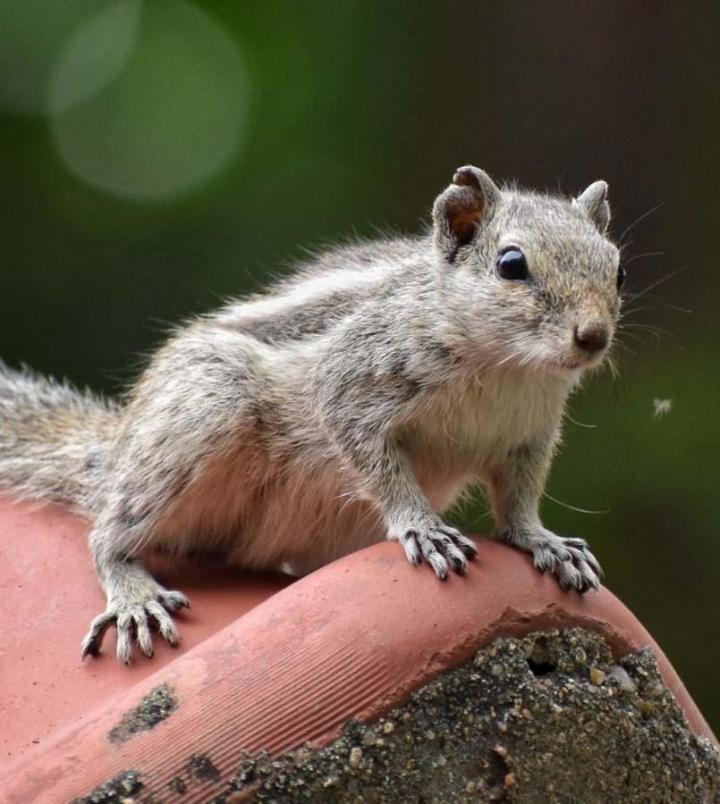Wildlife Info
Raccoons
Raccoons are increasingly found in urban areas for various reasons. Numerous residential and commercial developments have contributed to their proximity to humans for access to food, numerous gestation and resting places during the winter period.
The breeding season starts in early February and mating usually occurs in early March for a gestation period of about 63 days. Litters average 4 to 5 pups, but can vary from 2 to 12 offspring. At birth, the female remains immobile with her cubs for about 7 days without moving or eating.
The young are born with their eyes closed and without teeth. They stay in the nest for about 8 weeks before coming out with their mother. Males do not participate in raising the young, while females are very maternal.
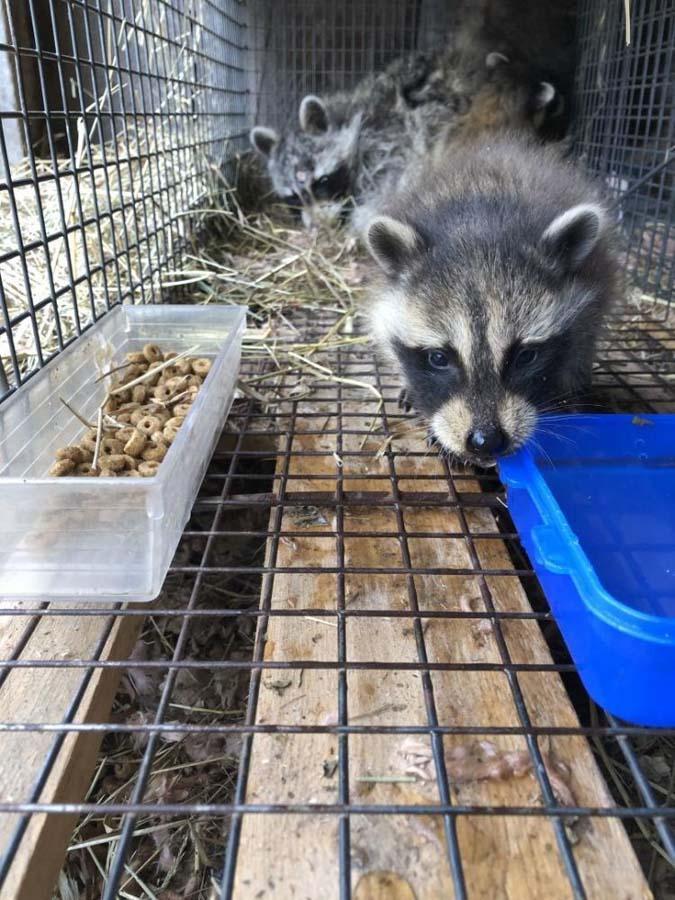
Raccoons Carry Lice, Fleas, and Even Ticks.
A parasite (Baylscaris proclyonis) can occasionally be found in their feces in the form of small, elongated, light-white eggs the size of a grain of rice and very sticky. This parasite is pathogenic to humans.
Pets can carry these parasites into your home and subsequently be transmitted to humans.
The majority of calls received for this subject are the presence of raccoons in the attics of homes, garages, barns and sheds. Detection is done by the noise that the raccoons make when they move in the attic or by the cries of the babies which are often confused with bird noises. It happens very often that males also enter the attic in search of the female who is already mated.
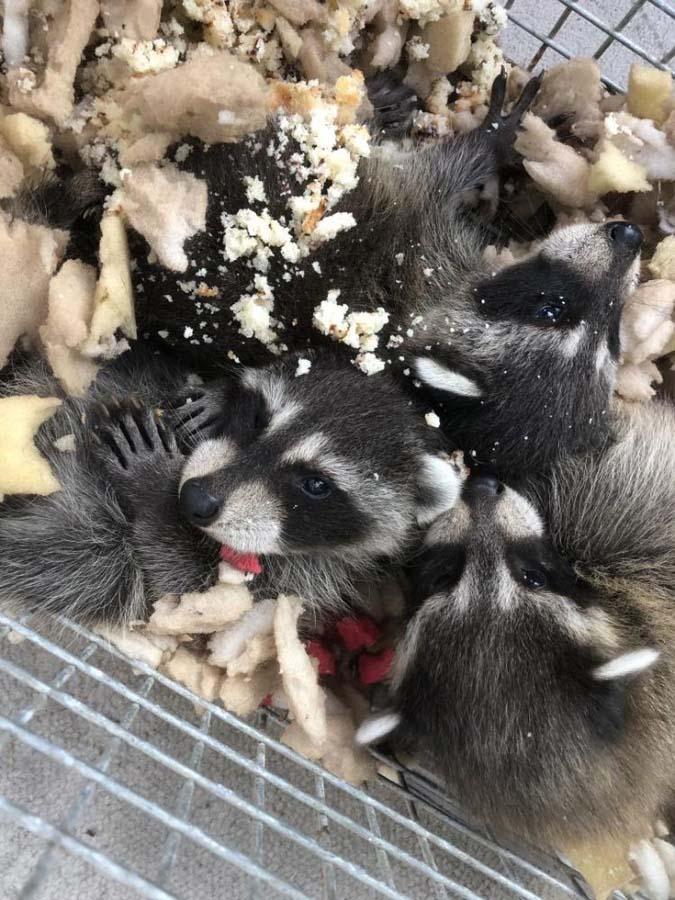
Raccoons …
The female will then push them away from her nest. This produces an enormous noise followed by grunting. This explains the fact that the female prepares her nest in a place very difficult to access so as not to be disturbed. If you suspect a raccoon is in your attic, check around the house to identify the entrance, which is often through the soffit near skylights or overhanging roofs. If it is necessary to use the services of a professional, never disturb them by knocking on the ceiling or scaring them into the attic.
This will make it even more difficult to retrieve the small ones that will be moved and very well hidden. Never block the accesses made by the raccoons if you suspect they are still inside. Wait for the trapper to arrive and capture the female first and then the babies.
They will then be transported to a natural environment and left in a natural shelter such as a hollow tree trunk. An inspection of the attic is necessary afterwards to locate the place used for the needs and at the same time to inspect for potential damage.
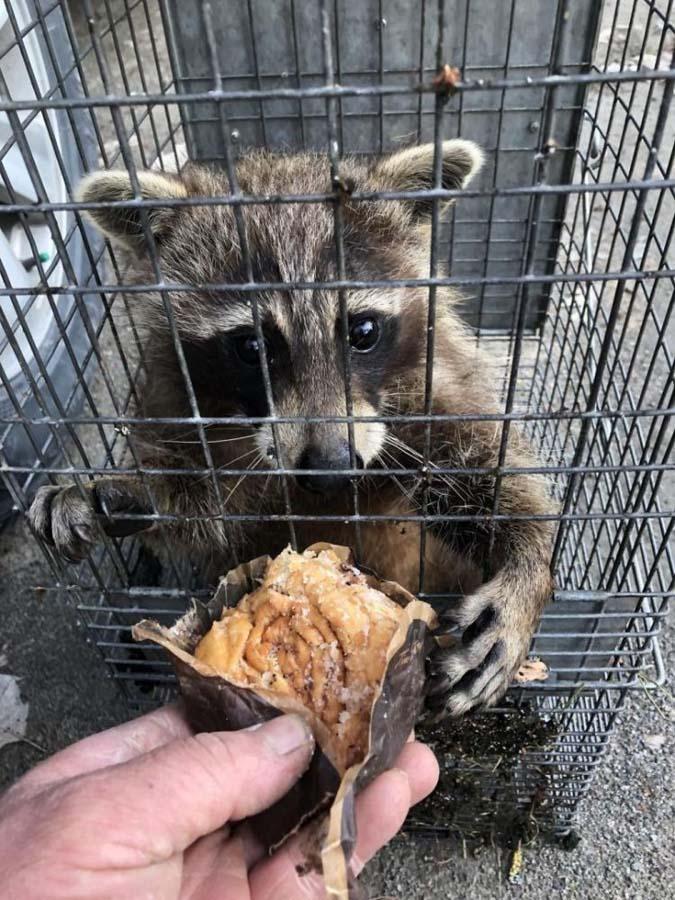
Shunks
Skunks of our region are called striped skunks. They are recognized for their beautiful black coats striped with white in a V shape. Many countries allow people to domesticate this small animal, once operated on, which seems harmless at first sight, but is frightening because of its defense mechanism. In fact, skunks have two anal glands that secrete a sulphur-colored liquid called “Thioalcohol”.
This extremely volatile liquid can be projected more than 4 meters. The skunk will always warn before using its defense, unless it is surprised and extremely afraid it will release its musk at the expense of being caught in the scent itself.
Its main predator is the Great Horned Owl. The skunk is a mainly nocturnal animal that lives in a burrow built in residential areas under sheds, cement patios, cement doorways or stone walls.
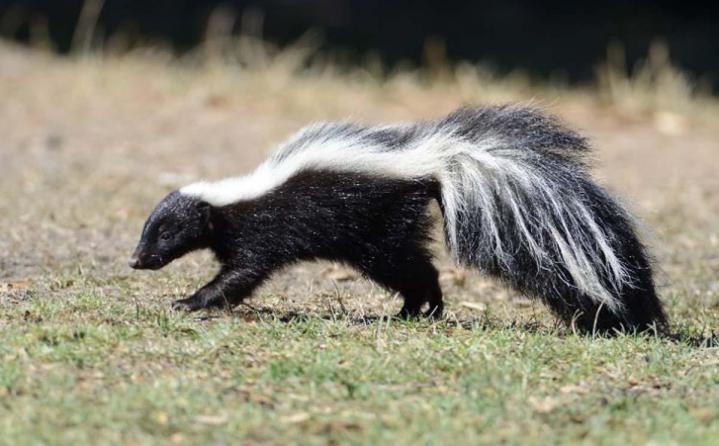
Shunks…
They are considered a pest in urban areas because of their odor and their appetite for grubs found under the lawn. A lawn infested with grubs can be completely destroyed in a week. To confirm the presence of a skunk, the removed grass patches are about three inches in diameter with a pointed hole at the bottom. Skunks are omnivorous, so they feed on small insects, small fruits, bird eggs and small mammals.
Skunks gather in groups for the winter. Up to 15 skunks can fit in a burrow in the winter, which in the spring will be used by a single female who will give birth to 5 to 6 young in May. The mating is done at the end of February for a gestation period of 65 days. The young take two months to be weaned and as soon as they are done, they are very active and ready to defend themselves.
Unlike the raccoon, the female skunk is not as maternal due to the fact that the young are not controllable. The ones that stay with mom, she keeps for the winter and the other more exploratory ones, well, they are left to themselves. The male is polygamous and does not participate in the rearing of the young.
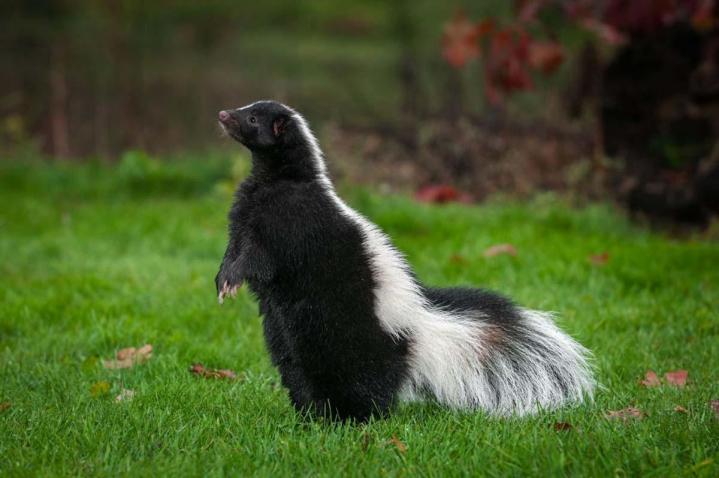
Know More About Shunks
The most important thing to watch out for in the field is continuous scent detection and suitable burrow locations. The skunk will not hesitate to dislodge a groundhog to use its burrow to give birth to its young.
If you observe a skunk collecting dry hay in its mouth, follow it, it will indicate its burrow. This means that she is preparing her nest. So, entrances under sheds, cement slabs and stone walls are good places for her to house her little family.
Once skunks have lived in a burrow, the chances of still having skunks are high because of the odor not perceived by humans that remain and attracts other skunks year after year. It is therefore necessary to take great measures to avoid that they have access under the sheds or cement floor.
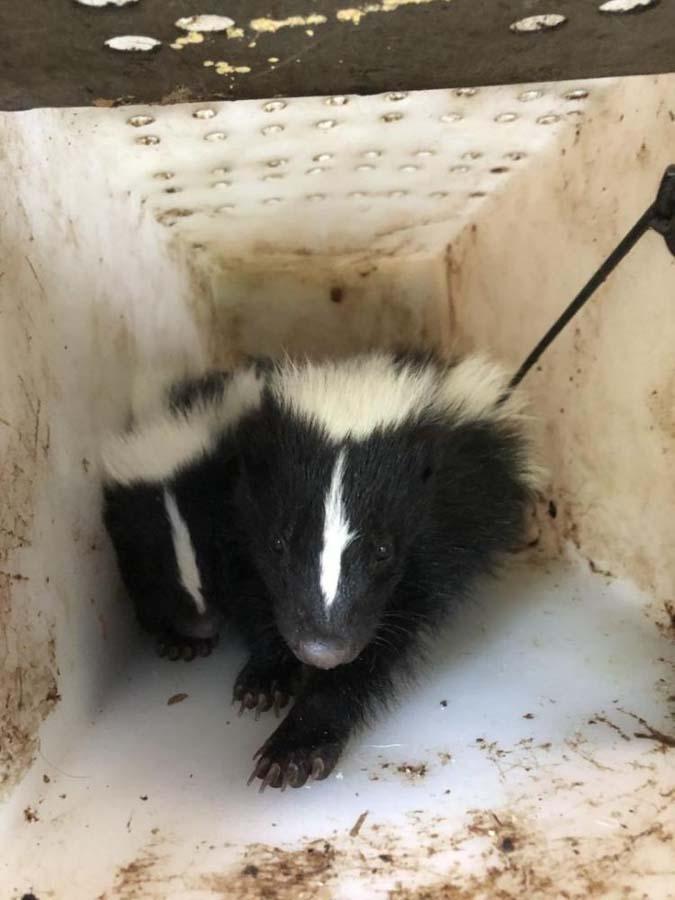
More Info About Shunks
Skunks always warn when they feel threatened. It starts by stamping its foot and turns around very quickly, raising its tail straight up and contracting its anus. She does the same little dance until her threat is too close, and then she lets her musk go.
A chemist by the name of Paul Krebaron invented a solution to neutralize the stench she gives off. At the time, he refused to patent his recipe and published it for the general public.
Here it is: 1 liter of oxygenated water (3% peroxide), a quarter cup of baking soda, a teaspoon of dish soap. Put the whole in an empty spray bottle that can be purchased at the store. Spray on the affected areas. For pets, I recommend diluting with water at a 1:1 ratio.
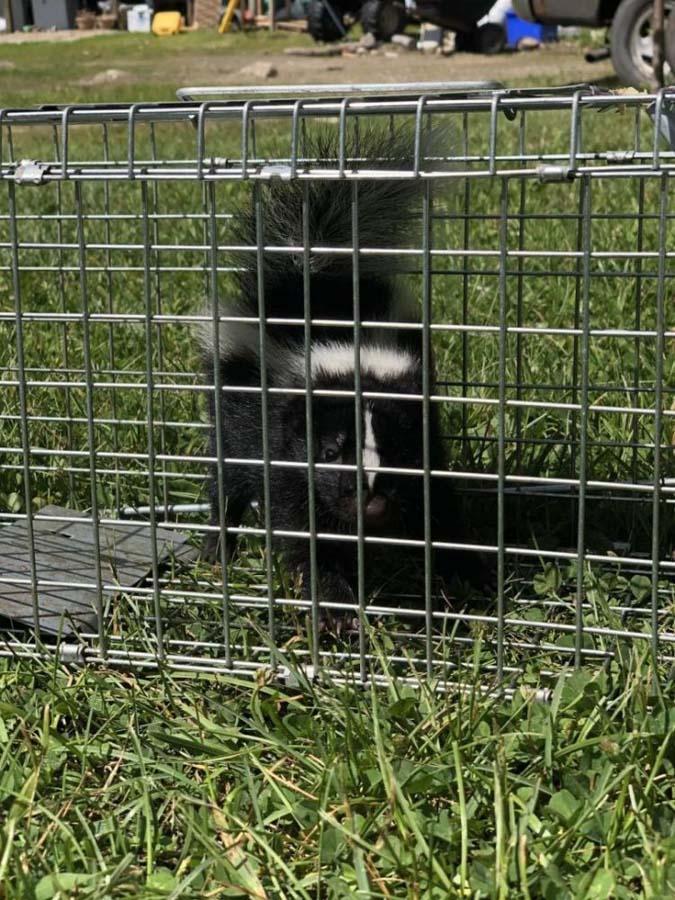
Groundhogs
The common groundhog, often called "SIFFLEUX", is a member of the rodent family like the squirrels. In the wild, they are often found in meadows in the middle of fields or on slopes along country roads.
They avoid wet and swampy places. Their diet consists mainly of fresh grasses such as clover, vegetables, and garden plants. In urban areas, groundhogs use the underside of sheds, cement slabs, wooden cords and often stone walls. They are considered vermin by farmers in the country and residents in urban areas for the damage they do to vegetable and flower gardens.
Several animals use their burrows, such as skunks who will not hesitate to dislodge them to take possession of their homes. Mating occurs at the end of hibernation in late March, early April. The gestation of 2 to 9 young lasts about 30 days. At the beginning of May, the young are born and open their eyes after about 4 weeks and leave the burrow for the first time after 5 to 6 weeks. A marmot can live up to 10 years.
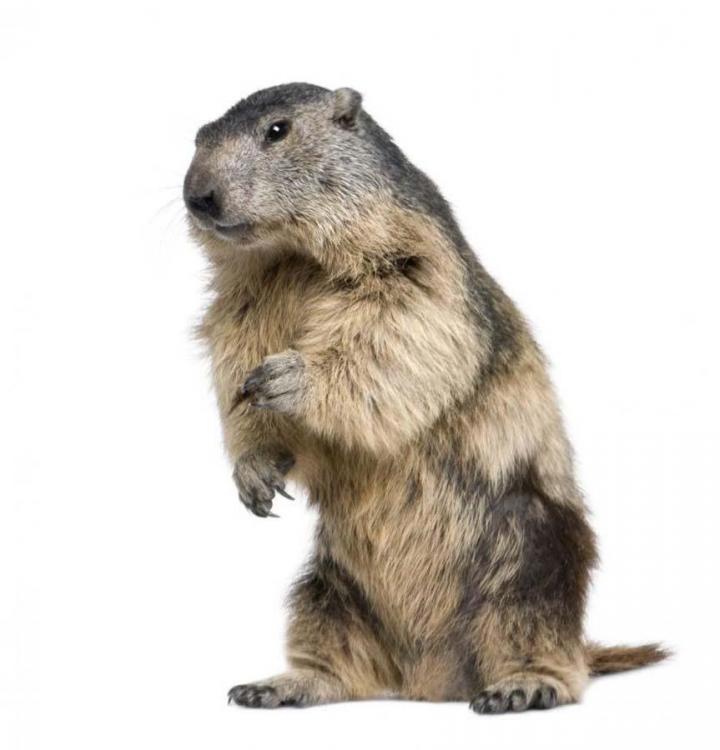
More Info About The Groundhogs
Groundhogs are one of the few animals in North America that hibernate completely. Their heartbeat drops from 80 to 4.5 per minute, their body temperature can drop to 3 °C and they consume almost no oxygen. Groundhog Day, which takes place on February 2, is a legend that makes headlines every year.
The legend says that if the groundhog sees its shadow, the winter will be extended by 6 weeks. The groundhog usually emerges from its hole in late March/early April and not on February 2nd.
The groundhog seems harmless, but can become very aggressive if threatened. They make shrill whistling noises and snap their teeth and make small barking noises. They can even charge at predators and humans when they feel cornered.
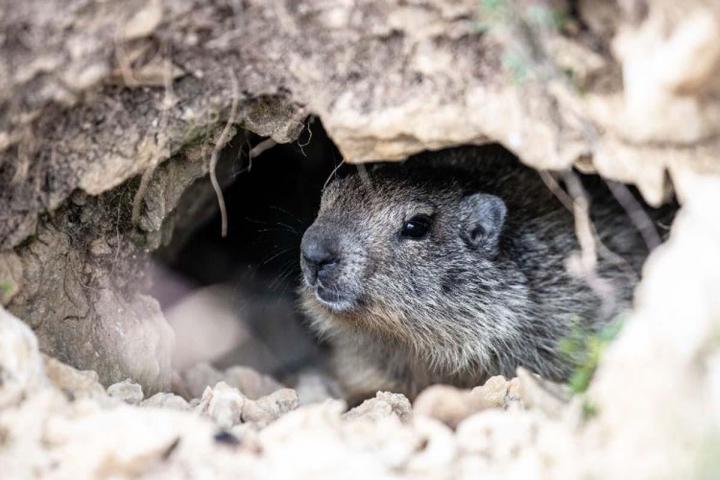
Groundhogs…
Its main predators are dogs, foxes, coyotes, and birds of prey. There is a hunting season for its succulent meat. It is not listed among the 15 species of fur bearers that are allowed to be harvested by trappers in Canada. Its fur has no value. In residential areas, the groundhog is one of the pests that is most tolerated by humans, except for those who are involved in gardening or when groundhogs take over stone walls that may collapse.
What you need to watch out for are burrows under sheds that leave a pile of soil near the holes. Also watch your fresh shoots in your vegetable garden, especially cucumber, bean, pea, and salad shoots.
When shoots are cut an inch from the ground, you have a groundhog in the area. If necessary, marmots are captured in a humane cage and relocated to a natural environment. When we are dealing with a mother with her cubs, the whole family is captured and relocated together.
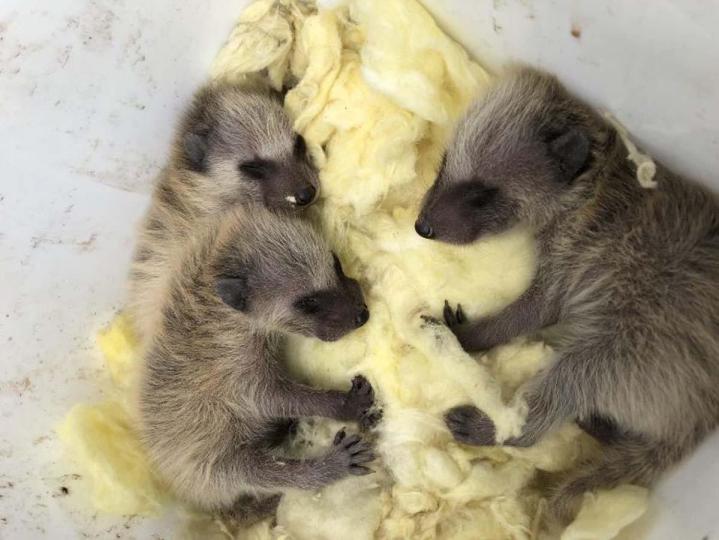
Squirrels
The four species of squirrels that we have in Quebec and throughout North America are the red squirrel, the flying squirrel, the chipmunk and the grey squirrel. The gray squirrel is much larger than the above species.
It is mostly found in urban areas or near houses in the country. The origin of this squirrel is the South East of North America and the Gulf of Mexico. It was introduced in Quebec from the United States.
In Europe, it was introduced in the 19th century for its fur, but it became a nuisance to the point of wanting to eliminate it completely.
The Red Squirrel
Striped Chipmunk (Small Chipmunk)
Smaller than the redhead, it is easily recognized by its facial stripes. Very solitary, the chipmunk digs a burrow with a single entrance that can be 45 to 85 cm deep. The main chamber can be up to 15 cm in diameter.
The chipmunk is in hibernation mode during the winter inside its burrow. It begins to collect food in late July. It has the ability to fill its cheeks with food and carry it into the burrow. This small rodent never finds itself high up in the attics of houses or sheds. It is faithful to its burrow, which can be seen on lawns by small, well-circulated holes the size of a golf ball with no piles of soil near the hole. A pile of soil indicates the presence of a mole.
Chipmunks emerge from their burrows on the first warm days of March by breaking through the snow. The males emerge first, and two weeks later the females surface. The mating season starts around mid-April, and the gestation period is about 30 days to give birth to 4 to 6 cubs. Mating takes place near the female's burrow. The female raises her young alone, and the males go from burrow to burrow looking for other females.
The Black and Grey Squirrel
Flying Squirrel
Flying squirrels are squirrels that hang out in families. Up to 10 of them can be found together during the winter in the same nest. Mating takes place in March and births occur in May and give birth to 2 to 4 young.
After 40 days, the young leave the nest and are weaned after 2 months. These squirrels reproduce after their first summer. The flying squirrel is active at night unlike all other squirrel species. Its eyes are very sensitive to daylight.
It is called a flying squirrel, but it does not fly, it hovers. Its four legs and the extra skin attached to its legs make it glide up to 50 meters. The flying squirrel feeds on small insects at night as well as on various acorns, nuts, mushrooms that it can find. Flying squirrels can enter a home through very narrow entrances.
